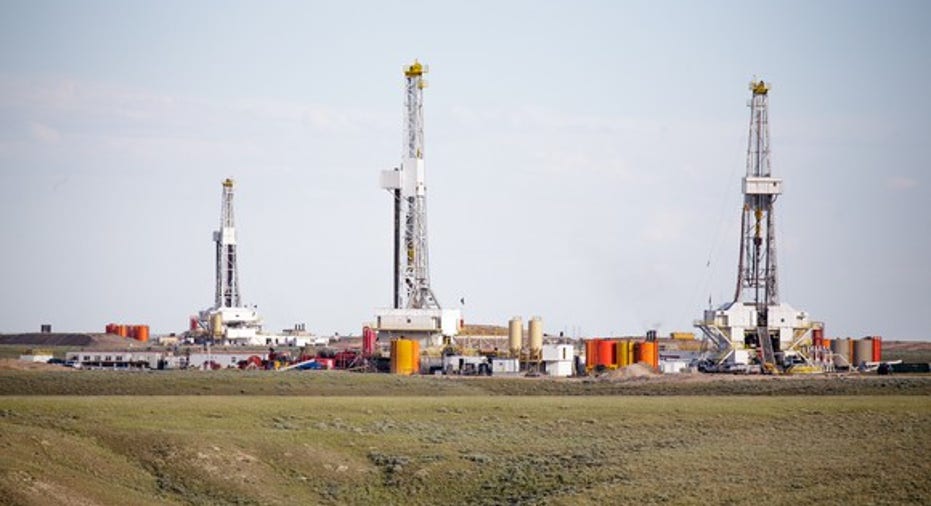Helmerich & Payne's Earnings Take Short-Term Hits From Higher Costs and International Weakness

The past six months have been an absolute whirlwind for Helmerich & Payne (NYSE: HP) and just about every other company that owns a land rig in the continental United States. With oil in the $50-a-barrel range, companies with shale assets, ranging from the micro-cap producers to the ExxonMobils of the world, are looking to ramp up spending and get the quick cash infusion shale can provide. For Helmerich & Payne, though, meeting this nearly insatiable demand for rigs has incurred some high costs, and it's showing in the company's most recent earnings report.
Here's a quick look at Helmerich & Payne's most recent results, why this period of costs may not be the worst thing for the company, and why management has high hopes for the rest of the year.
Image source: Getty Images.
By the numbers
| Results* | Q2 2017 | Q1 2017 | Q2 2016 |
|---|---|---|---|
| Revenue | $405.3 | $368.6 | $438.2 |
| Operating income | ($65.7) | ($49.1) | $41.6 |
| Earnings per share | ($0.45) | ($0.33) | $0.19 |
| Free cash flow | ($8.1) | ($79.7) | $124.1 |
*in millions, except per-share data. Data source: Helmerich & Payne earnings release.
It seems that both bulls and bears could easily support their case with the most recent earnings results (that is, from the second fiscal quarter 2017). On the bearish side, one could easily point to the fact that costs continue to rise at a rate faster than revenue, free cash flow is slipping, and the company's international segment continues to be weak.
There has been a noticeabledecline in profitability of late. Helmerich & Payne's adjusted average rig margin for its U.S. operations slid 25% from the first to the second quarter as average day rates declined and rig expenses increased. The company's international operations -- a small but steady business-- are also starting to drag on the bottom line. Total active international rigs continue to decline, and rig revenue per day slipped 58%. Furthermore, management expects continued weakness in the international market as many companies outside the U.S. have yet to restart their exploration and production programs.
For the bulls, the items that are most promising are Helmerich & Payne's rapid increase in rig utilization, increasing market share for its U.S. land rig operations, and the fact that the company's higher costs are a result of putting idle rigs back to work. Over the course of the quarter, the companyadded 41 rigs to active operations. That's a new rig going live every 52 hours. At that rate, one has to expect that the company is going to incur a higher rate of spending to expedite the activation of that idle equipment. It's also worth noting that much of the production from the new rigs going on line will be sold on spot market prices. With so many available rigs, it's almost expected that spot market rigs will garner lower rates than those under longer-term contracts.
The other encouraging sign is that the company is gaining market share. With so much idle equipment, producers have their pick of the litter and have immense pricing power. So even though many of Helmerich & Payne's competitors are offering rigs at possibly lower rates, those producers are still selecting H&P equipment. This trend of capturing market share has been happening for close to a decade. In 2008, Helmerich & Payne estimated it owned 9% of the land rig market. Today, that share has increased to 19%, with most of the gains coming at the expense of its largest competitors.
What's even more encouraging is that the company has many high-specification rigs still available. As of the end of March, Helmerich & Payne had more idle high-spec rigs than its peers combined. This suggests that as the market continues to improve, Helmerich & Payne will be able to capture a growing chunk of it.
Image source: Helmerich & Payne investor presentation.
From the mouth of management
Despite the headwinds from the company's international and offshore segments, CEO John Lindsay was quite optimisitc in his assessment of the current situation:
What a Fool believes
Personally, I tend to lean toward the bullish argument for Helmerich & Payne despite the slightly disappointing numbers for this particular quarter. As long as the company is activating rigs at such a rapid rate, investors should expect higher spending rates. Once that equipment is on line, though, those costs will abate and margins should improve.
Investors looking for a quick hit in 2017 may not want to look at land rigs. But if you're looking for a long-term bet on the second coming of American shale, it's hard to argue against Herlmerich & Payne and its management's reputation as great stewards of shareholder capital.
10 stocks we like better than Helmerich & PayneWhen investing geniuses David and Tom Gardner have a stock tip, it can pay to listen. After all, the newsletter they have run for over a decade, Motley Fool Stock Advisor, has tripled the market.*
David and Tom just revealed what they believe are the 10 best stocks for investors to buy right now... and Helmerich & Payne wasn't one of them! That's right -- they think these 10 stocks are even better buys.
Click here to learn about these picks!
*Stock Advisor returns as of April 3, 2017
Tyler Crowe owns shares of ExxonMobil. The Motley Fool owns shares of ExxonMobil. The Motley Fool has a disclosure policy.